Bárbara Wagner and Benjamin de Burca’s first solo exhibition in New York City, Five Times Brazil, on view at the New Museum from June 30–October 16, 2022, turned inwards towards the duo’s films set in the country where Wagner was born and raised, and where the two artists have resided for many years. Focused on cultural production, these films address and multiply the complexities of authorship, audience, and cultural identity, as well as the potency of joy and self-expression as radical forms of resistance in a complicated socio-political landscape. Despite numerous periods of significant upheaval in Brazil, Wagner and de Burca’s films are consistently instilled with an extraordinary resiliency.
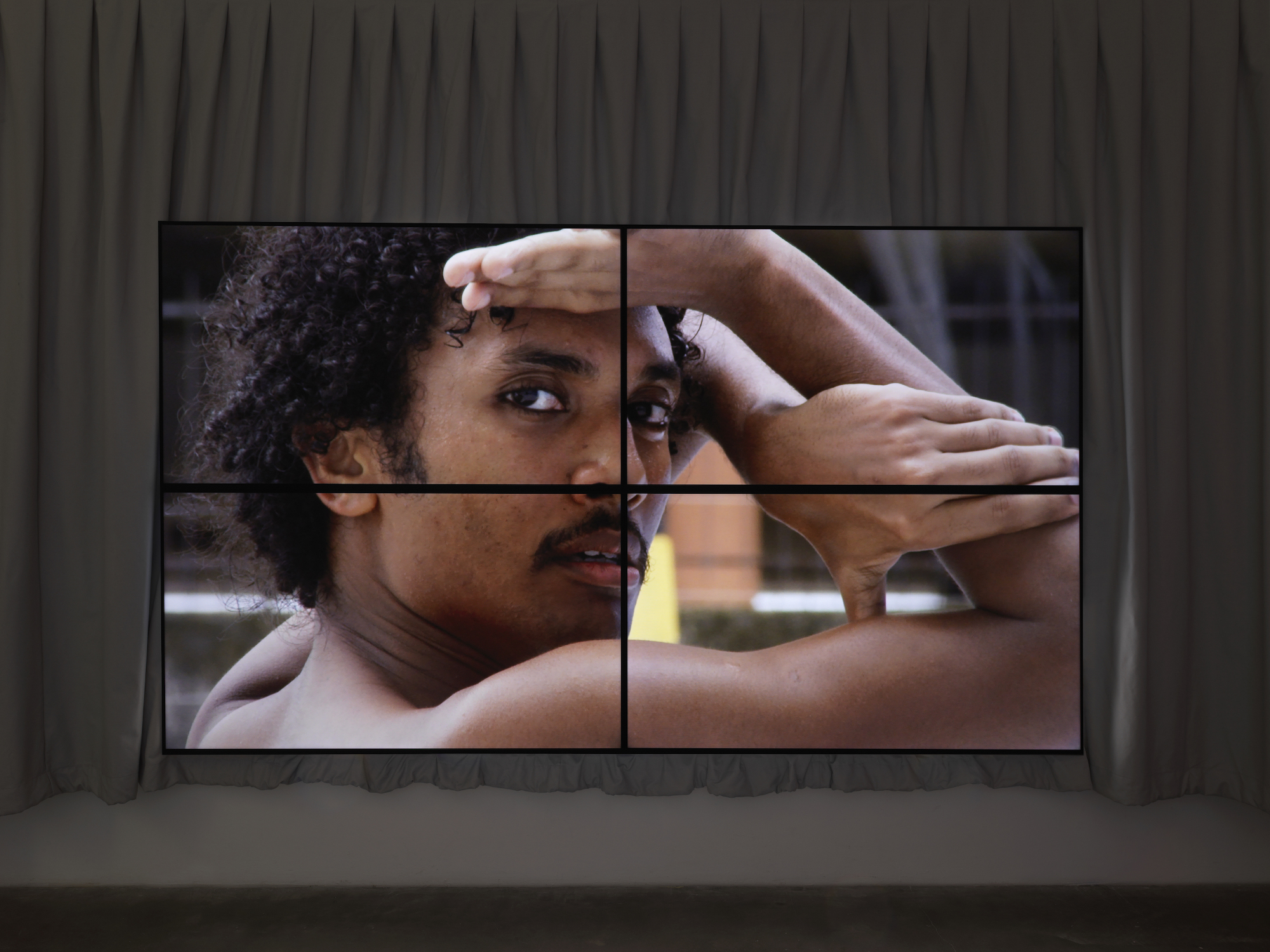
Bárbara Wagner & Benjamin de Burca, Faz que vai [Set to go], 2015. 2K HD video, color, 5.1 sound, 12 min. Installation view. Bárbara Wagner and Benjamin de Burca: Five Times Brazil, June 30–October 16, 2022, The New Museum, New York. Courtesy of the New Museum. Photo: Dario Lasagni.
Moira Sims: The subjects of your films are established performers in their own right, whether they are dancers performing the frenetic frevo style that is often associated with Brazilian Carnival, actors in the Movimento dos Trabalhadores Rurais Sem Terra (Landless Workers Movement) theater troupe, or Evangelical gospel singers on Brazilian radio. Your subjects knowingly play themselves on camera. What is your relationship to truth-telling vs. storytelling?
Bárbara Wagner & Benjamin de Burca: Are we our true selves when we perform our desires? And does it depend on who is watching? In our films we tread a line between these questions and reveal how the desire to express translates into identity for an audience. The desires performed in our films possibly represent our “better” selves, pointing to identity as a continuous performance. Our approach to the cinematic is inscribed in the documentary, a method that seeks to say “we are here making this film.”

Bárbara Wagner & Benjamin de Burca, Estás vendo coisas [You are seeing things], 2016. 2K HD video, color, 5.1 sound, 16 min. Installation view. Bárbara Wagner and Benjamin de Burca: Five Times Brazil, June 30–October 16, 2022, The New Museum, New York. Courtesy of the New Museum. Photo: Dario Lasagni.
MS: Your presence as co-authors and collaborators, both with each other and your subjects, is definitely palpable. How much are your subjects involved in the post-production process?
BW & BdB: Our films are made entirely in collaboration with the performers, but we should make clear that our scripts are materialized in a storyboard, which is a map for shooting and a blueprint for editing. Our collaborators are as much involved in directing themselves as we are in directing the film crew. We decide certain aspects of filmmaking, from positioning the body in relation to the lights, to camera movements, to setting the tempo of gestures and mood of the performance. In between takes we review footage and allow for the participants to see their image as it’s being constructed and improve upon it. There are no surprises in the final film.
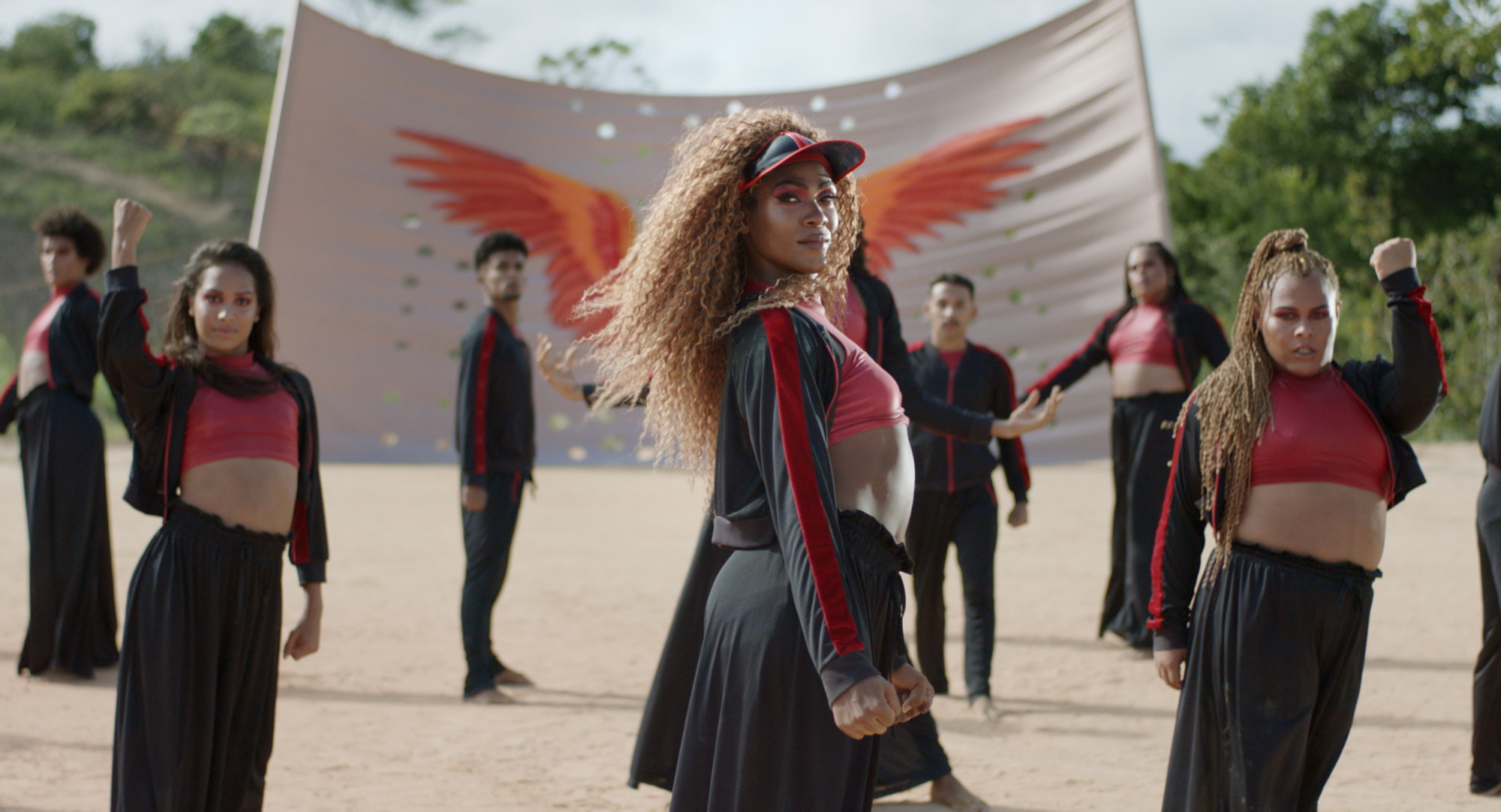
Bárbara Wagner & Benjamin de Burca, Swinguerra, 2019. 2K HD video, color, 5.1 sound, 21 min. Video still. © Bárbara Wagner & Benjamin de Burca. Courtesy of Fortes D’Aloia & Gabriel, São Paulo/Rio de Janeiro.
MS: Some of the cultural phenomena that you highlight in your films, such as frevo, or maloya, an emphatic genre of Creole music from Réunion Island, have been recognized by UNESCO as Intangible Cultural Heritage in recent years. What was once widely considered underground, or even deemed politically dangerous and publicly prohibited, is now being organized as a tourist attraction. How has this shift in public perspective informed your work with these communities?
BW & BdB: How tradition survives through access and creative labor is a central question in our films, and this inevitably prompts historic dynamics of power, including those of class and taste. Specifically, in our earlier works, addressing maloya (Cinéma Casino, 2014) and frevo (Faz que Vai, 2015), which are indeed Intangible Cultural Heritages of Humanity, we see the idea of resistance not through the lens of UNESCO, which crystallizes these traditions as forms of the past, but through the always changing strategies that contemporary performers use to keep them alive.
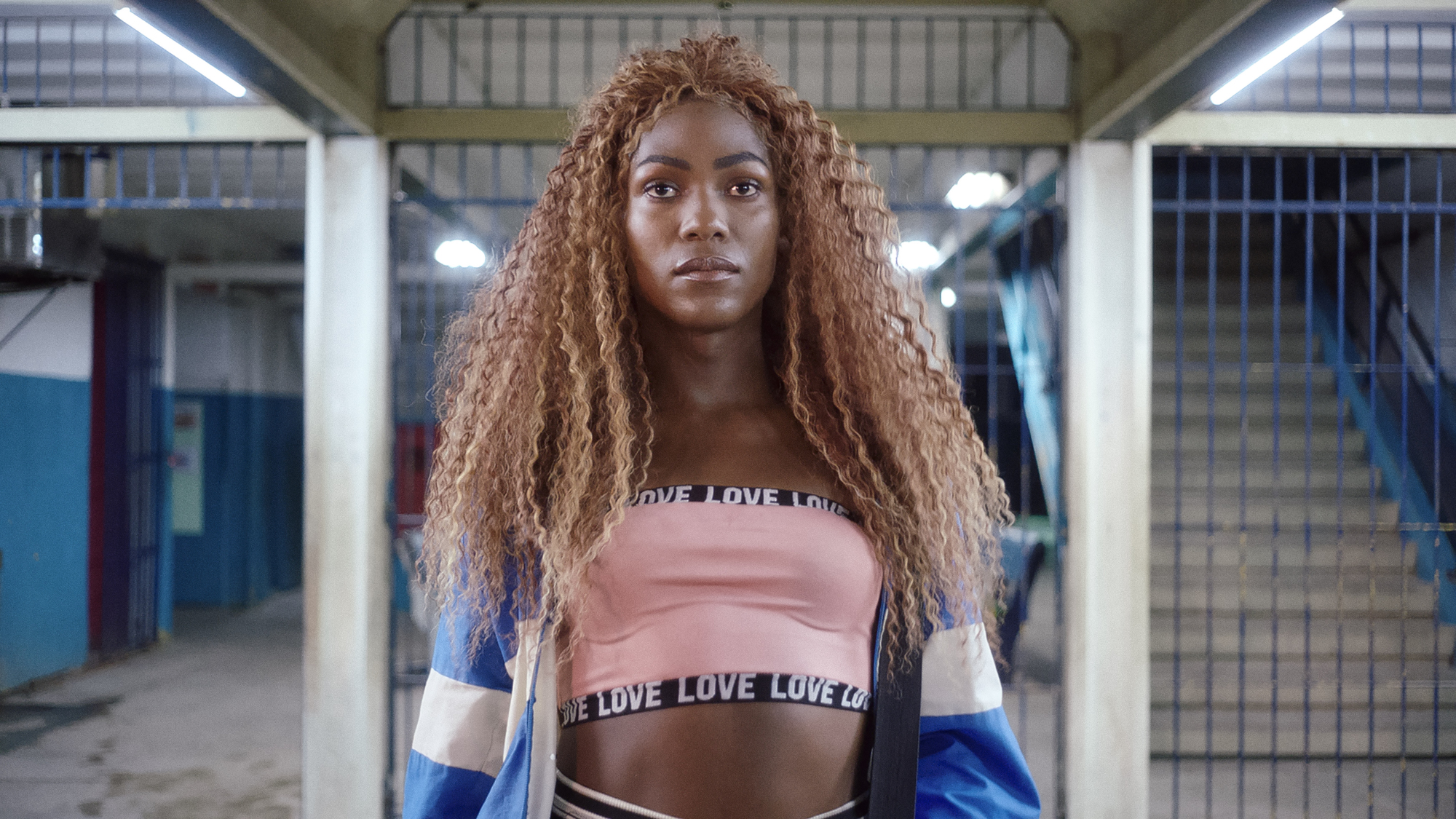
Bárbara Wagner & Benjamin de Burca, Swinguerra, 2019. 2K HD video, color, 5.1 sound, 21 min. Video still. © Bárbara Wagner & Benjamin de Burca. Courtesy of Fortes D’Aloia & Gabriel, São Paulo/Rio de Janeiro.
Our subsequent works address contemporary pop forms like brega, a melodramatic genre of Brazilian pop music (Estás Vendo Coisas, 2016), Evangelical gospel music (Terremoto Santo, 2017), and spoken word poetry rooted in hip-hop (Rise, 2018). These genres have mainstream, global reach, and have their own channels of distribution. We are thus far beyond an ethnographic approach, which often analyzes human practices at the edge rather than in the center of global society. We do, however, aim to depict how autonomous these highly self-organized manifestations of culture are from the corporate music industry and corresponding dominant tastes.
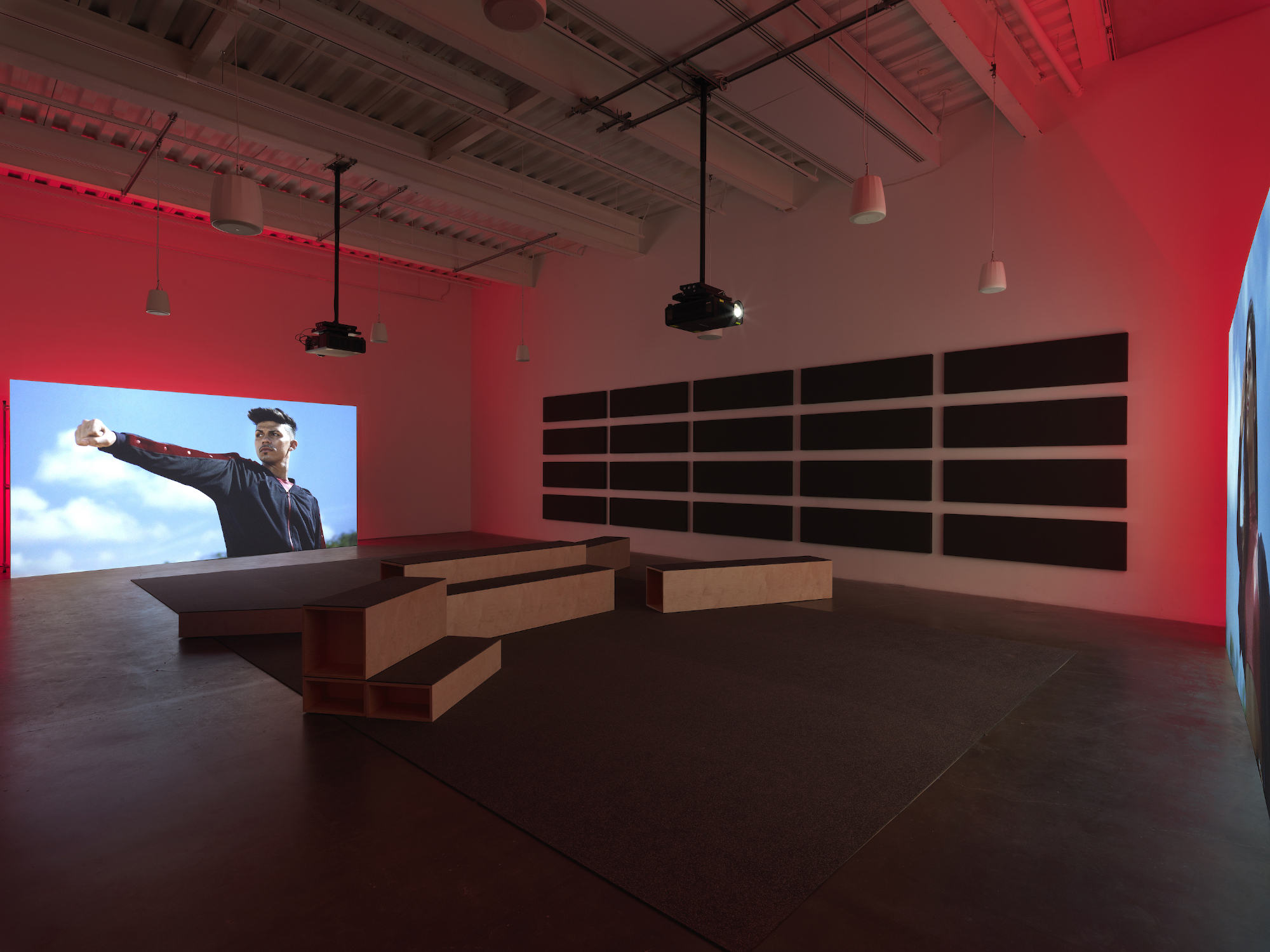
Bárbara Wagner & Benjamin de Burca, Swinguerra, 2019. 2K HD video, color, 5.1 sound, 21 min. Installation view. Bárbara Wagner and Benjamin de Burca: Five Times Brazil, June 30–October 16, 2022, The New Museum, New York. Installation view. Courtesy of the New Museum. Photo: Dario Lasagni.
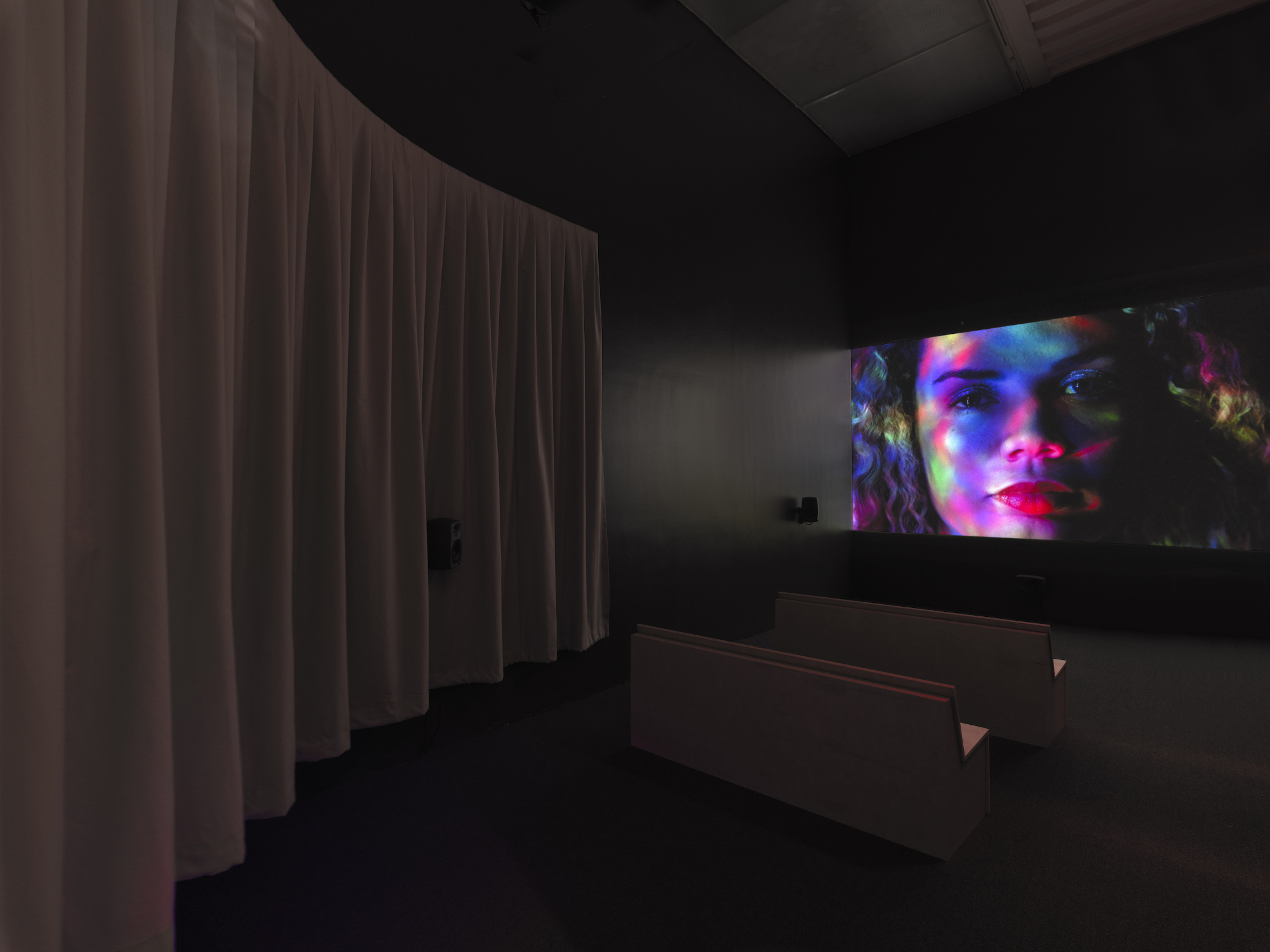
Bárbara Wagner & Benjamin de Burca, Estás vendo coisas [You are seeing things], 2016. 2K HD video, color, 5.1 sound, 16 min. Installation view. Bárbara Wagner and Benjamin de Burca: Five Times Brazil, June 30–October 16, 2022, The New Museum, New York. Courtesy of the New Museum. Photo: Dario Lasagni.
MS: How do your films relate to the legacy of Brazilian Cinema Novo or Theater of the Oppressed?
BW & BdB: We see the manifestations of both Cinema Novo and the Theater of the Oppressed as radical responses to the political regime in Brazil at the time of their appearance, specifically the dictatorship which ended roughly 30 years ago. This relatively young democracy we call Brazil still maintains many authoritarian, violent, and exploitative policies aimed at resources, both natural and cultural. Making culture in a less unequal Brazil requires holding on to the principles and dynamics initiated for Glauber Rocha (Cinema Novo) and Augusto Boal (Theater of the Oppressed), among many others.
Rocha and Boal developed radical production techniques to forward their political ideas, as well as strategies to promote awareness and debate. The political questions in our films are implicit through the staging of the performers in relation to the contexts in which they are portrayed. There is no script placed on our subjects, nothing is recorded clandestinely, and there is no voice-over or additional text introduced by us.

Bárbara Wagner and Benjamin de Burca, Fala da Terra [Voice of the Land], 2022. 2K HD video, color, 5.1 sound, 20 min. Video still. © Bárbara Wagner & Benjamin de Burca. Courtesy of Fortes D’Aloia & Gabriel, São Paulo/Rio de Janeiro.
MS: Your most recent film, Fala da Terra, 2022, is a collaboration with Coletivo Banzeiros, a theater troupe composed of members of the MST, an activist organization that has faced persecution throughout its four-decade-long history of fighting for land rights and equality. In 1996, 19 MST members were murdered by the Brazilian military police, an event now referred to as the Eldorado do Carajás Massacre. In your film, witnesses to the massacre sit on wooden bleachers observing Coletivo Banzeiros actors perform scripted conversations between rural farmers, military police, and Indigenous communities. In the room where this film was installed at the New Museum, the audience is invited to sit on bleachers that plainly resemble where the witnesses sit on screen, inferring the audience’s parallel state of passive observation, or perhaps even complicity. What role does architecture and exhibition design play?
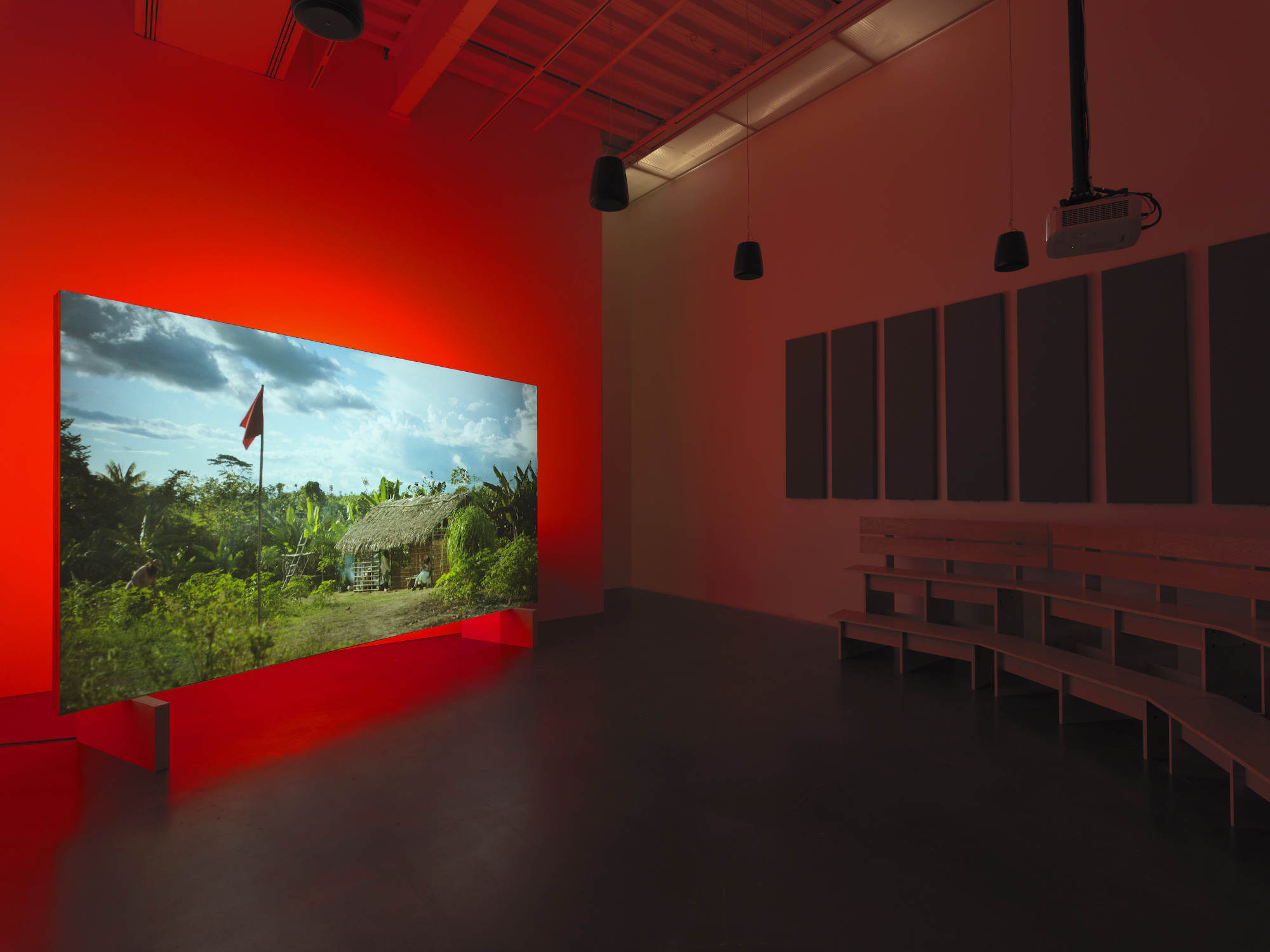
Bárbara Wagner and Benjamin de Burca, Fala da Terra [Voice of the Land], 2022. 2K HD video, color, 5.1 sound, 20 min. Installation view. Bárbara Wagner and Benjamin de Burca: Five Times Brazil, June 30–October 16, 2022, The New Museum, New York. Courtesy of the New Museum. Photo: Dario Lasagni.
BW & BdB: The conditions of the reception of our films are also conducive to the understanding of their proposals. We seek to involve the spectator as an active participant. For example, with the two-screen installation of Swinguerra (2019), the audience decides their perspective. The film is displayed on two screens that the viewer is not able to watch at the same time from any one viewpoint. But it still maintains a chronological, narrative continuity: the images differ, but the viewer can follow the film irrespective of which screen they look at. As it is a film about rehearsing for a competition, a lot of learning is done through dancers watching each other. The viewer also watches, and is invited to physically turn from one screen to another, taking in other viewers both on and off screen. This doubled act of learning through watching is integral to the piece in a similar though different way to the bleachers mentioned in Fala da Terra (2022). Again, we activate the act of watching, but with a more specific function: it is more akin to an act of witnessing. x

Bárbara Wagner and Benjamin de Burca produce videos and video installations in dialogue with other artists and collectives. Working together for over a decade, the duo has developed a research method according to documentary observation and investigation, constructing the direction, screenwriting, costumes, and soundtracks in collaboration with the protagonists of each project. This horizontal way of working is crucial for transmitting the frequently urgent, socially and historically determined content of their audiovisual investigation. Even in their incursions into other modes of making, such as photography, painting, or woodcutting, social types and political friction are still formative elements of the discourse presented.
Moira Sims is a Brazilian-American writer, curator, and producer of artist projects and exhibitions living and working in New York City.